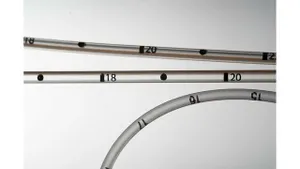After a decade of contraction, injection molding poised for growth
The total value of the injection molding business declined from $62 billion at the start of the ought's to $50 billion by 2010, and yet some major molded part markets proved relatively recession-resistant, and in 2011 almost all the others are rebounding with an average annual growth of 4.1% for injection molded output in real (volume) terms forecast to 2014.
May 18, 2011
Those findings in Peter J. Mooney's newest report "The Markets for Injection Molders: Review and Outlook", which looks back over the production of regional injection molded output, in the aggregate and in all the major markets, from 2000 to 2010, a decade marked by two recessions and the inexorable rise of globalization.
Mooney notes that from 1970 to 2000, U.S. manufacturing industries grew at roughly the same rate as U.S. real GDP, but this historical relationship changed in the 2000s. Whereas U.S. real GDP growth averaged a subpar 1.7% over the last decade, the average annual change in the output of U.S. manufacturing industries was actually negative (-0.3%).
"As regional injection molders emerge from the Great Recession and chart their future strategic planning," Mooney said, "they need to understand whether this recent underperformance by U.S. manufacturing industries was temporary or an augury of future substandard growth. They also need to review their business models in order to identify and address those markets with the best short-term, medium-term and long-term growth prospects."
As the total value of the regional injection molding business declined over the ought's from $62 billion to $50 billion, key injection molding markets varied widely. The automotive industry, for example, peaked in 2005, declined to 2009, and then rebounded in 2010. By contrast the housing market boomed through 2005, then faltered, and here in 2011, Mooney says, "there is still scant evidence of a rebound in residential and non-residential building activity."
Mooney's research methodology proceeded along four tracks. First, it weighed data relating to the trend of production in all the major injection molding markets from 2000 through the first quarter of 2011. Second, it assembled and studied the aggregate sales of 145 leading U.S. and Canadian injection molders from 2000-2010. Third, it segmented the data and studied the sales performance of those injection molders focusing exclusively on one of the two leading injection molding markets, like automotive and packaging, as well as those serving a diversified customer base. Finally, Mooney conducted telephone-based interviews with officials at a selection of U.S. and Canadian injection molders, inquiring as to the state of the markets they are addressing, the growth they experienced in 2010, and their expectations for 2011 and beyond.
About the Author(s)
You May Also Like


